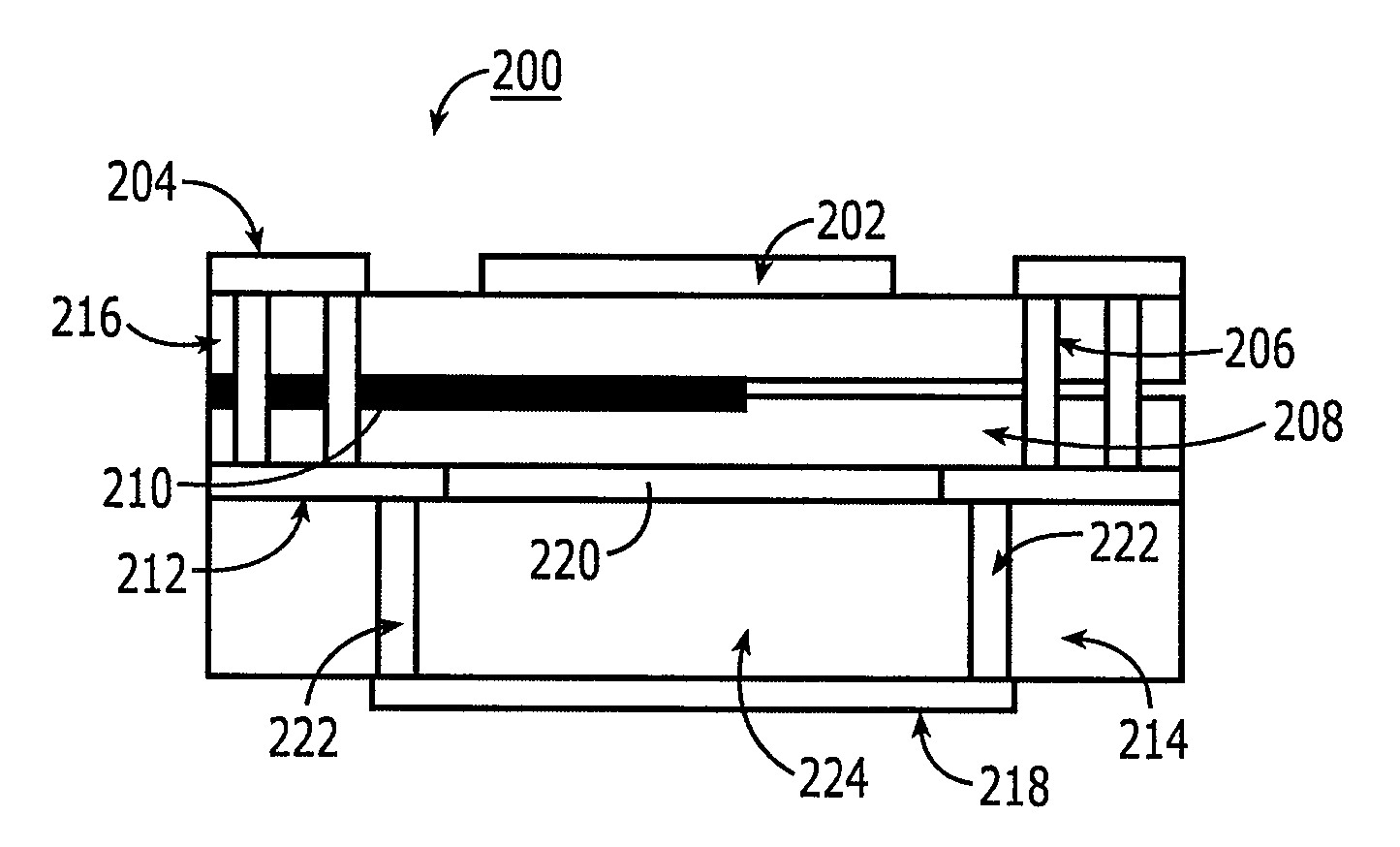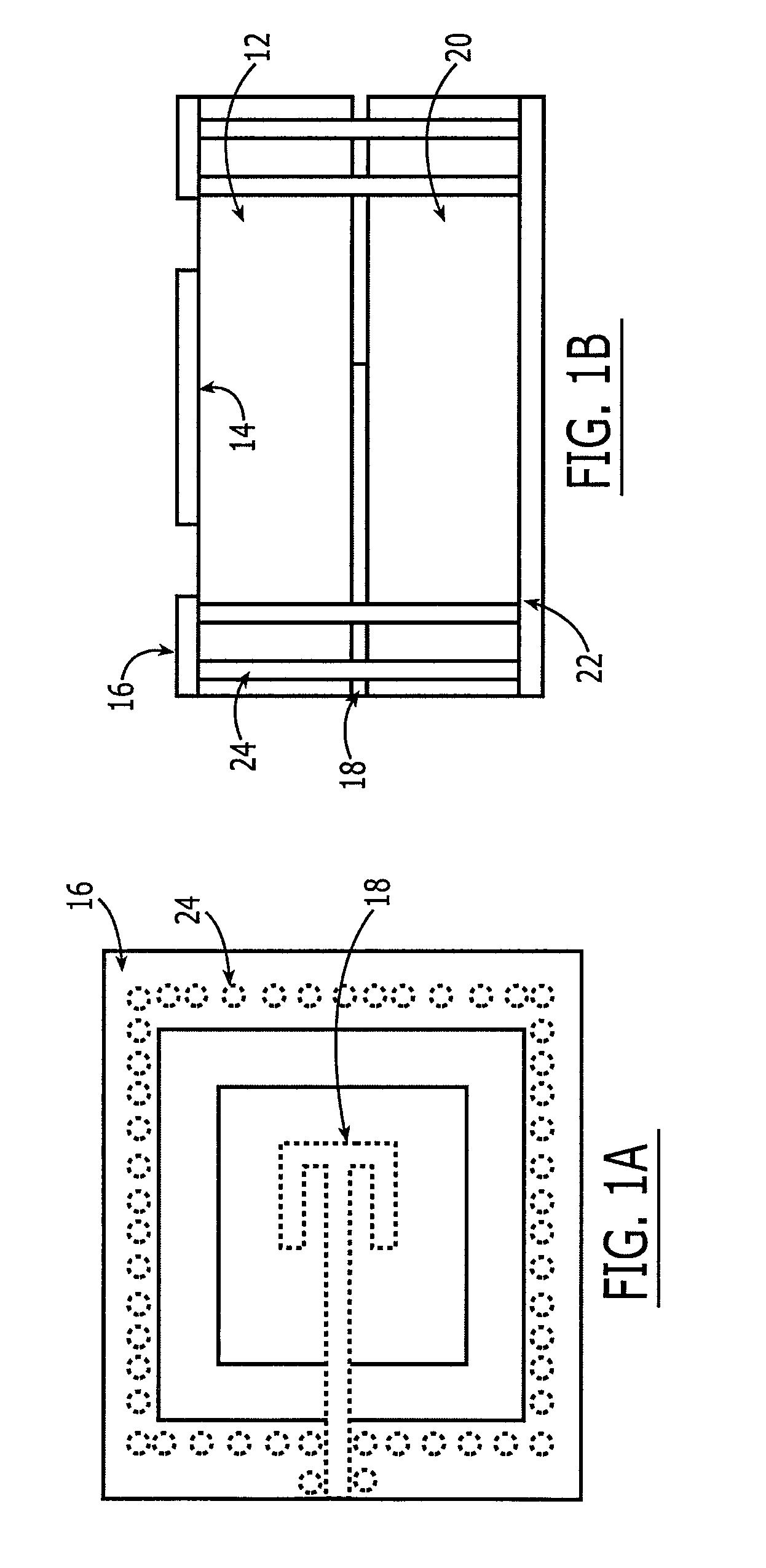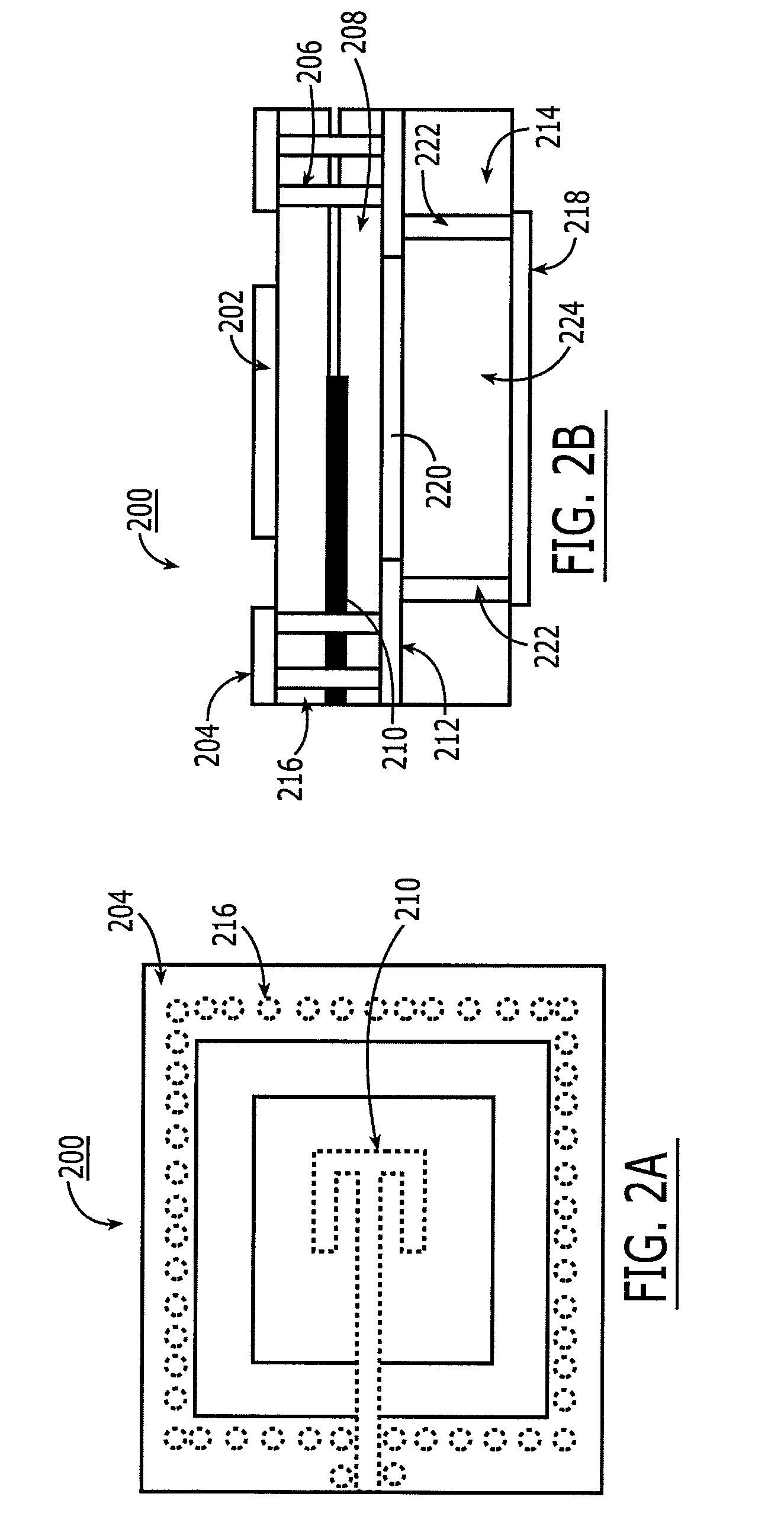Broadband proximity-coupled cavity backed patch antenna
- Summary
- Abstract
- Description
- Claims
- Application Information
AI Technical Summary
Benefits of technology
Problems solved by technology
Method used
Image
Examples
Embodiment Construction
[0032]FIGS. 2A and 2B are top plan and cross-sectional side views, respectively, of a proximity-coupled cavity-backed patch antenna 200 in accordance with a first embodiment of the present invention. The antenna patch 202 is disposed on top of a thin substrate 206. It is peripherally surrounded by a top ground plane 204.
[0033] Substrate 206 may be any low loss substrate material conventionally used by those of skill in the art for constructing patch antennas, such as RT Duroid®, or a Teflon-based substrate, such as manufactured by Rogers, Taconics and Arlon. It also could be very thin flexible substrate (normally known as Flex). Such substrates typically have a permittivity of about 2 to about 4.
[0034] Disposed on the top side of a second, thin substrate 208 and / or on the underside of the first substrate 206 is a feed line 210. The feed line 210 may be a microstrip or a strip line. A middle ground plane 212 is disposed on the bottom side of the second substrate 208. The middle gro...
PUM
 Login to View More
Login to View More Abstract
Description
Claims
Application Information
 Login to View More
Login to View More - R&D
- Intellectual Property
- Life Sciences
- Materials
- Tech Scout
- Unparalleled Data Quality
- Higher Quality Content
- 60% Fewer Hallucinations
Browse by: Latest US Patents, China's latest patents, Technical Efficacy Thesaurus, Application Domain, Technology Topic, Popular Technical Reports.
© 2025 PatSnap. All rights reserved.Legal|Privacy policy|Modern Slavery Act Transparency Statement|Sitemap|About US| Contact US: help@patsnap.com



